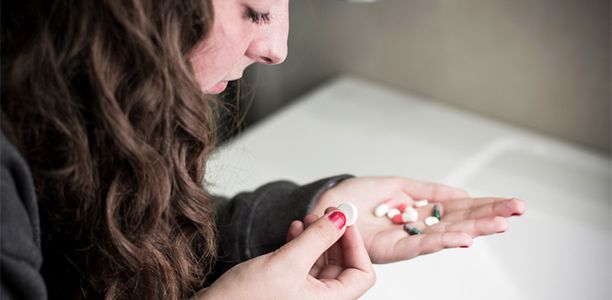A new study by Massachusetts General Hospital (MGH) investigators finds that college students who misuse stimulant drugs are more likely to have attention-deficit hyperactivity disorder (ADHD), conduct disorder or substance-use disorder than are students not misusing stimulants. The report published in the Journal of Clinical Psychiatry also finds immediate-release stimulants are more likely to be misused than extended-release versions of the drugs.
“Our data suggest that college students who misuse prescription stimulant medications are more likely to exhibit clinically relevant psychiatric dysfunction,” says Timothy Wilens, MD, chief of Child and Adolescent Psychiatry at MassGeneral Hospital for Children (MGHfC) and co-director of the MGH Center for Addiction Medicine, corresponding author of the report. “In addition to higher levels of ADHD, conduct disorder, and alcohol or drug use disorders, the majority of those misusing stimulants met or approached criteria for stimulant-use disorder.”
Stimulant drugs are widely prescribed to treat ADHD, which is believed to affect up to 8% of U.S. college students, and several studies have documented frequent nonmedical use – either without a prescription or taking higher-than-prescribed doses – particularly among college students. One recent study found that almost two thirds of college students had been offered stimulants for nonmedical use and 31% had actually used them over a four-year period.
The current study differs from previous investigations in that – instead of relying only on participants’ answers to survey questions about their use of stimulants and other drugs, alcohol consumption and other factors including quality of life – it relied on structured interviews that have been validated for the diagnosis of neuropsychiatric disorders, including substance-use disorders. Wilens explains, “Someone may report on a survey that they misused stimulants on ‘a handful of occasions’ and have never been diagnosed with a substance-use disorder. But during the intensive interview process it may be found that they mixed prescription stimulants with alcohol and that they had problematic interactions with others that led to legal action. While that misuser may deny having a stimulant-use disorder, when systematically queried, it may be found that he or she met or approached the criteria for a full disorder.”
Study participants were all enrolled as undergraduates in Boston-area colleges and universities and were ages 18 to 28. As part of the enrollment process they were screened for “college lifestyle” factors, which included whether they had been diagnosed or treated for ADHD, whether they had ever misused stimulant medications, and their use of alcohol or other drugs. For the purpose of this study, stimulants were considered those approved by the FDA for treatment of ADHD, and even a single reported nonmedical use categorized a participant as a stimulant misuser.
Of the 300 students who were enrolled, 100 were classified as misusers based on their responses to the recruitment surveys, and 200 were considered control participants. Both groups included individuals diagnosed with ADHD, and those who never misused their prescriptions were included in the control group. The structured interviews were conducted by specially trained interviewers with backgrounds in psychology, and the results reviewed by a panel of child psychiatrists and licensed psychologists, who confirmed diagnoses indicated by interview results. Participants with potentially serious substance-use issues were referred to local treatment centers.
Stimulant misusers were more likely than controls to have been diagnosed with ADHD or to have exhibited related symptoms – being easily distracted, having trouble paying attention – during childhood. They also were more likely as adults to have difficulty following instructions and to dislike tasks requiring attention. Misusers were more likely to meet criteria for substance-use disorder – including use of drugs and alcohol together – and 67% actually met or approached criteria for stimulant-use disorder. They acquired or purchased stimulants from friends or acquaintances, were more likely than controls to indicate they used any drugs to “get high” and reported a lower overall sense of well being.
“Not everyone is driven to misuse prescription stimulants simply to ‘get high’,” Wilens explains. “Some misusers may be pressured to use a friend’s prescription if they believe it will improve academic performance, which is not likely if combined with alcohol or other drugs. We know that untreated ADHD is associated with increased risk of alcohol- and drug-use disorders, so it is not surprising that we found high rates of co-occurring ADHD and of stimulant-use and overall substance-use disorders in those misusing stimulants.”
An associate professor of Psychiatry at Harvard Medical School, Wilens adds, “It’s possible that pre-existing cognitive deficits may lead some individuals to develop stimulant misuse as they try to self-medicate. The extent of an actual stimulant-use disorder in those who misused stimulants at all suggests that this problem may be more prevalent and severe than previously thought. And finding in this population that immediate-release stimulants have a much higher likelihood of being misused than do extended-release stimulants emphasizes the usefulness of prescribing extended-release versions or possibly nonstimulant ADHD drugs for college students.”
(Source: Massachusetts General Hospital, Journal of Clinical Psychiatry)










